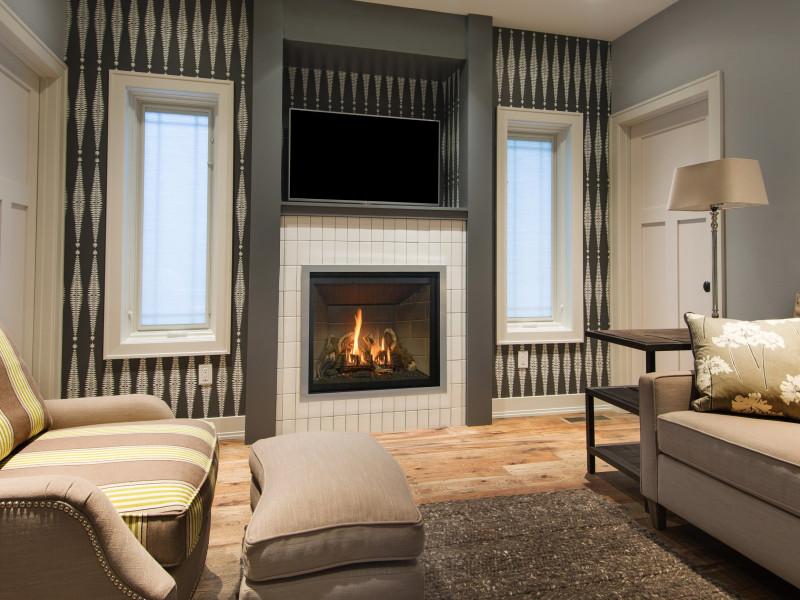
12 Jan How Does A Gas Fireplace Work?
In a bid to reduce heating costs, many consumers look at alternative methods. At Kozy Heat, we recognize the need to reduce the cost of keeping the temperature of your home comfortable while improving the overall efficiency of your heating system. We also know how pleasurable it is to sit and watch flames in a fireplace dancing, relaxing you and your family. A gas fireplace satisfies all these requirements, but how does a gas fireplace work to accomplish this?
How Does A Gas Fireplace Work?
Today’s vented gas fireplaces consist of several parts:
- Fuel source
- Media Options
- Gas vents: one for fresh air entry/one for waste gas exit (Direct Venting)
- Glass
Each component places a specific role in a vented system. A gas line supplies the fuel to the fireplace. It appears behind the airtight glass, usually hidden beneath several media options, which can include a ceramic Log Set, Glass beads, or ceramic rocks. Fresh air enters for combustion; waste gases exit – utilizing the collinear or coaxial pipes.
Such a system does not withdraw any warm air from the room or waste heat in such ways as warming the chimney or masonry. Direct vent gas fireplaces rely on convection heat to heat homes. Overall, the gas fireplace offers a more efficient heating system by lowering the rate of combustion to fuel significantly.
Gas Fireplaces
To answer the question of “How does a gas fireplace work best for you,” contact our informative and knowledgeable Kozy Heat dealer near you. They can discuss with you the options available – ones that suit your circumstances and meet your needs. While a gas fireplace certainly utilizes less fuel to create heat than conventional wood burning fireplaces, it is important you understand how to choose the best option possible.

















